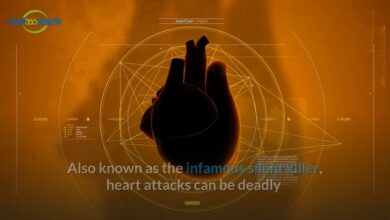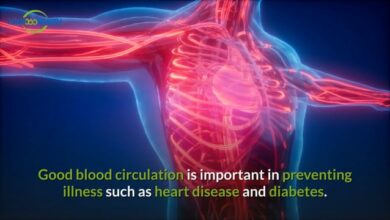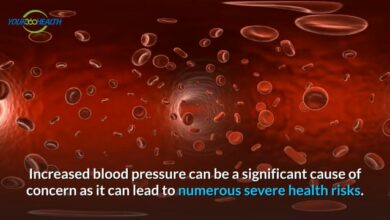WHAT IS ANGINA?
When your heart is not getting enough blood because your coronary arteries have narrowed, the condition is known as angina. The heart responds by beating harder and faster to increase the blood supply. When angina symptoms are triggered, you are alerted that your heart needs you to rest. The typical description of symptoms includes crushing pain, heaviness, or squeezing or pressure that radiates through the abdomen, often down the arm, into the neck, jaw, teeth, or back. Angina is part of the acute coronary syndromes and may lead to a heart attack. The Mayo Clinic reports that there are over three million cases of angina diagnosed each year.
The primary way angina differs from a heart attack is that the coronary arteries get narrow slowing down blood supply. In contrast, in heart attack cases, the blood flow is obstructed because of a blockage. Another difference is that there is no permanent damage to the heart, which happens if you suffer a heart attack. However, angina may sometimes precede a heart attack. Angina may occur suddenly or be a recurring condition.
Symptoms of Angina:
The symptoms of angina vary from person to person, such as:
- Dull ache or tightness and heaviness in the chest radiating to the shoulder, back, jaw or neck.
- Sometimes no chest discomfort but a pain in the jaw, neck, and arm.
- Discomfort and or pain that ranges from mild to severe.
- Heartburn, indigestion, or nausea
- Anxiety, fatigue, or inability to exercise
Both angina and a heart attack may cause chest pain, discomfort, or tightness. If it’s angina, it should go away after a few minutes of relaxing or taking a prescription drug like GTN (glyceryl trinitrate). It’s unlikely that the signs will go away after a few minutes of rest or treatment if it is a heart attack. Either way, get medical attention immediately.
Types of Angina
According to Medical News Today, the different types of angina are:
- Stable Angina:
Angina pectoris is the medical name for stable angina. When the heart is working faster than usual, such as during exercise, stable angina develops. On average, it lasts about 5 minutes. Stable angina follows a predictable pattern and may continue for months or even years. Symptoms are usually relieved by rest or medications.
- Unstable Angina:
Unstable angina is the most dangerous type of angina. It has no predictable pattern and typically happens while you are at rest. The patient will experience an increased level of discomfort that will last for more than 5 minutes; resting and treatment may not be enough to ease the symptoms. Unstable angina can signal the possibility of a heart attack. It is caused primarily by atherosclerosis, characterized by an obstruction that prevents blood from reaching the heart. Anyone experiencing any of these symptoms must immediately seek medical assistance.
Other than stable and unstable angina, two additional types of angina are microvascular angina and variant angina.
Causes of Angina:
The Center for Disease Control (CDC) says various causes lead to angina:
- The leading cause of angina is underlying coronary artery disease.
- Your coronary arteries provide oxygenated blood to the heart. Cholesterol builds up on the inside of an artery’s wall and hardens into plaque, and this causes the arteries to narrow.
- Factors such as artery damage and smoking may further add to the accumulation of plaque.
- The heart muscle cannot work correctly if your blood is unable to carry oxygen to the heart. It is this situation that then results in angina.
Treatment of Angina
Some standard treatment options to manage angina include lifestyle changes, prescription medicines, and surgery. Since you can easily anticipate when the pain will occur, limiting physical activity will help you control your chest pain. Consult a doctor and obtain advice on your fitness schedule and diet to help you make the changes needed to live as healthily as possible.
- Lifestyle
The recommended lifestyle changes include changing your eating habits, following an exercise plan even if it must be modified from your routine, giving up alcohol use, and quitting smoking. Consistently managing these areas of your life also reduces the risk of chronic diseases like hypertension, diabetes, and high cholesterol.
- Medication
Generally, doctors treat the underlying causes of angina with medication. Nitroglycerine is a commonly used drug to manage episodes of angina. Other than nitroglycerine, medicines to control high blood pressure (beta-blockers, calcium channel blockers) are a part of angina management therapy. Many doctors also prescribe Blood-thinning medication to prevent blood clots from developing.
- Surgery
Angioplasty, which is a minimally invasive procedure, is used for the treatment of stable angina. The goal is to restore healthy blood flow to the heart. In some cases, a coronary stent or even open-heart surgery is also performed for coronary artery bypass graft if the medical professional considers any of these procedures beneficial or necessary.




